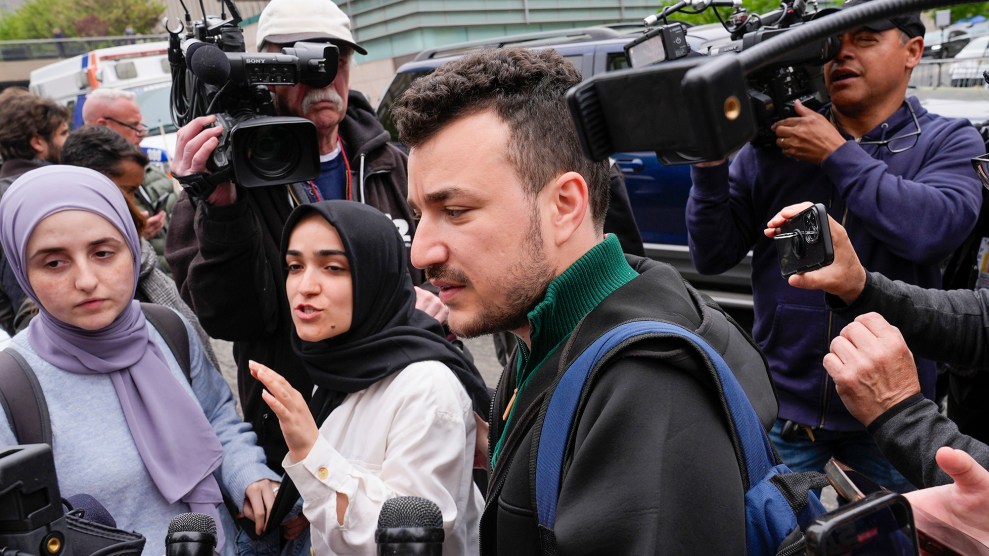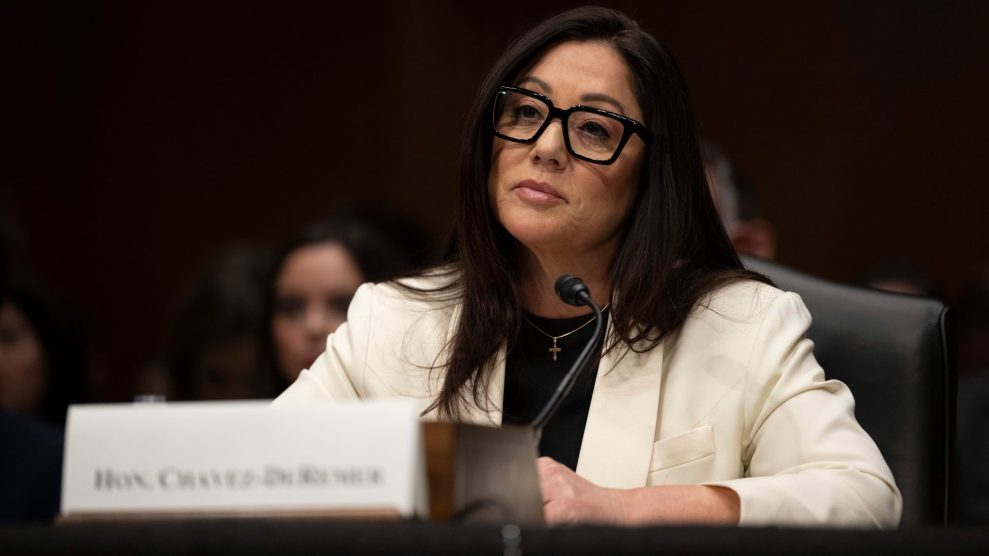
ICE officers arrest a man suspected of being an undocumented immigrant.Charles Reed/U.S. Immigration and Customs Enforcement via AP, File
This past weekend marked a major escalation in the Trump administration’s mass deportation efforts, with the dramatic detention of Mahmoud Khalil, a Palestinian activist who played a prominent role in the protests against Israel on Columbia University’s campus last year. Khalil, a Columbia graduate student, is a permanent legal resident in the US. The Trump administration says it detained Khalil for what it described, without evidence, as his support for Hamas, and President Donald Trump promised “this is the first arrest of many to come” in a Truth Social post. In the meantime, a federal court in New York prevented the federal government from deporting Khalil while it hears his case. He’s currently being held at an immigration detention facility in Louisiana.
Khalil’s arrest—and the Trump administration’s reimagining of immigration writ large—are in many ways a product of decades of dysfunction within the US immigration system itself. On this week’s episode of More To The Story, Reveal’s new weekly interview show, host Al Letson talks with The New Yorker staff writer Jonathan Blitzer about the 50-year history of the country’s inability to deal with migrants at the southern border and why the Trump administration’s approach to immigration is much more targeted—and extreme—than it was eight years ago.
When Trump returned to the White House, he brought with him aides and advisers he hoped would fulfill one of his most far-reaching campaign promises: mass deportations of undocumented immigrants and the revocation of temporary legal status for thousands of others. It’s a radical, wholesale rethinking of the country’s immigration system, one that by almost any measure has been broken for decades.
In discussing his new book, Everyone Who Is Gone Is Here: The United States, Central America, and the Making of a Crisis, Blitzer argues that the roots of the US’ immigration problems can be traced to America’s Cold War foreign policy from almost a half-century ago. Since then, he argues, decades of misguided domestic policy have led to a crisis at the US-Mexico border made worse by a failure of both parties to pass comprehensive immigration reform. When the Trump administration took office in 2016, much of its focus was on building a wall along the southern border, which was never fully built. But Blitzer argues that the approach to immigration this time will likely look very different.
“If this border is quieter for longer this second term, I think what that frees up this administration to do is to pursue increasingly radical action in the interior of the country,” Blitzer says. “And I think that’s going to have much more painful consequences for families.”
This is the second episode of Reveal’s new podcast, More To The Story. The first featured an interview with Tim Heaphy, the January 6 committee’s lead investigator, who discussed the rise of extremism in America and how Trump’s 1,500 pardons for Capitol rioters is damaging to democracy.
How is the Cold War tied to a failure of US immigration policy?
— Reveal (@reveal) March 12, 2025
"More To The Story’s" @Al_Letson talks with The New Yorker’s Jonathan Blitzer about the US-Mexico border’s 50-year history and why immigration reform seems almost impossible today. https://t.co/HkrHPnNdv4 pic.twitter.com/GCdir8SB2v
Find More To The Story on Apple Podcasts, Spotify, iHeartRadio, Pandora, or your favorite podcast app.
















